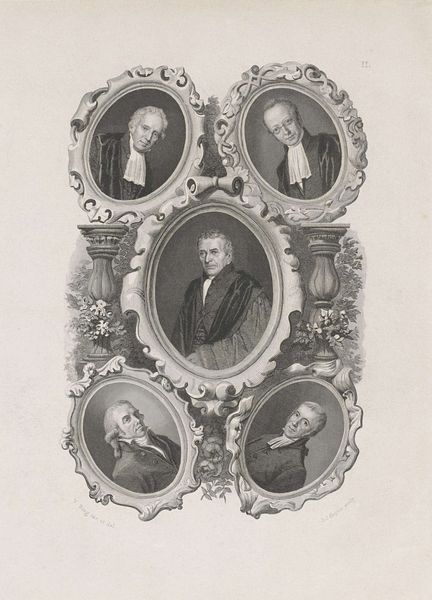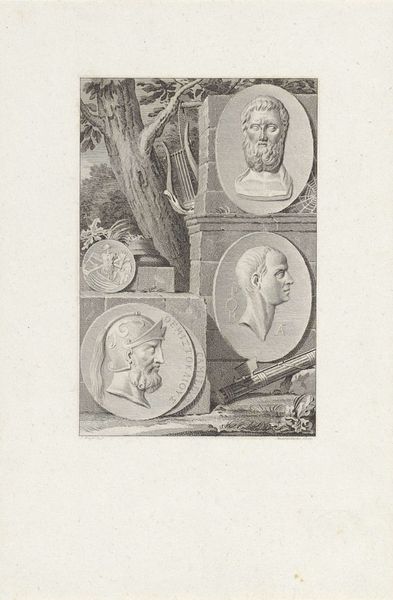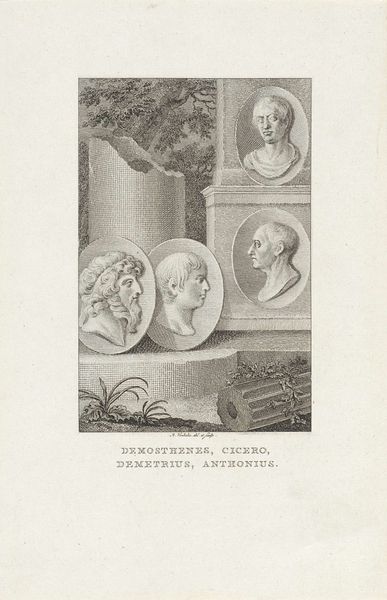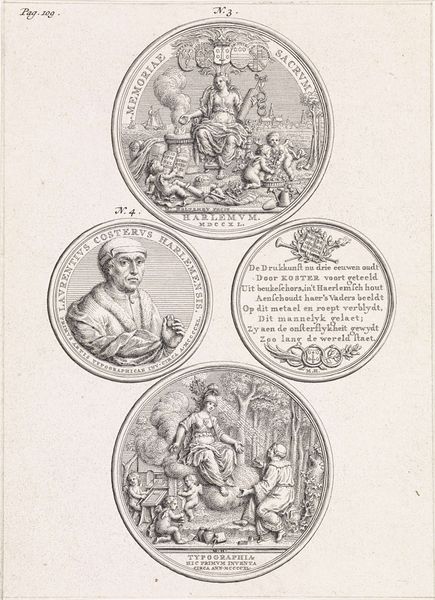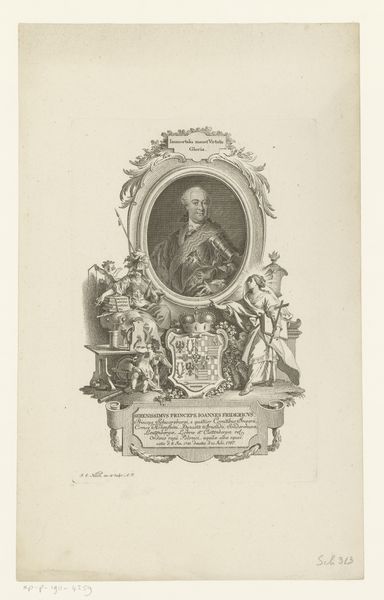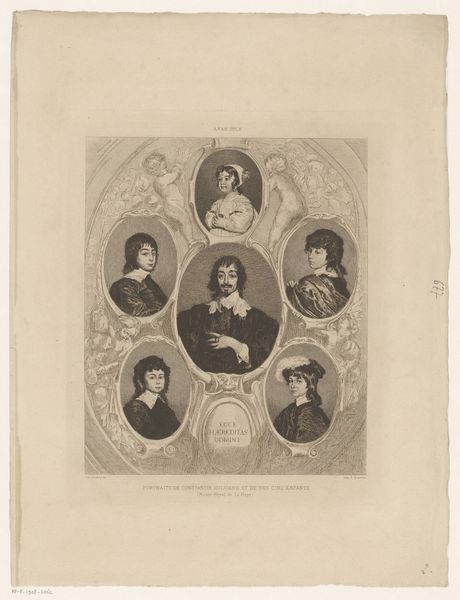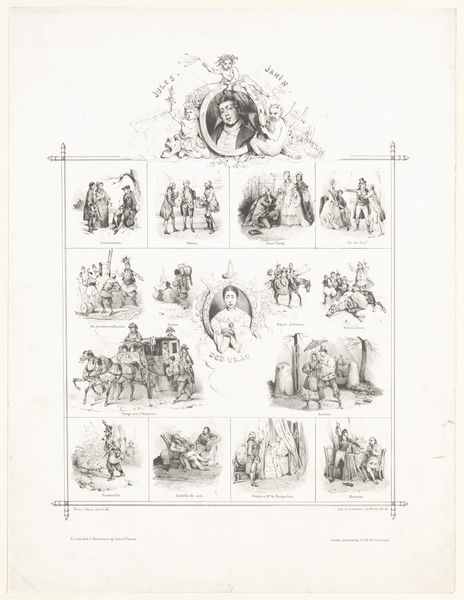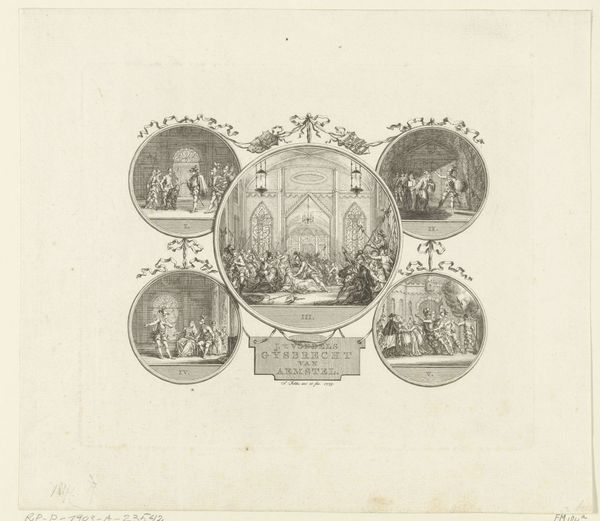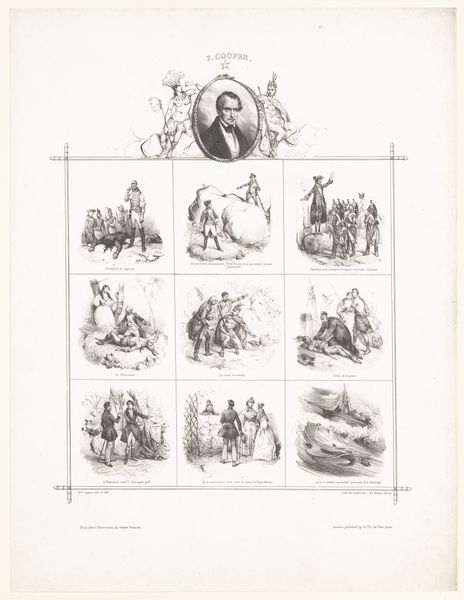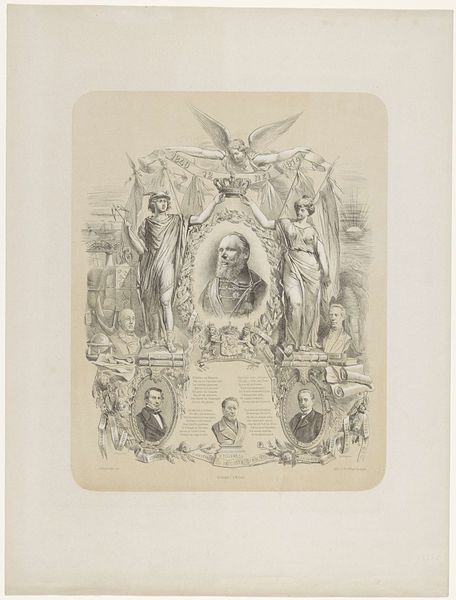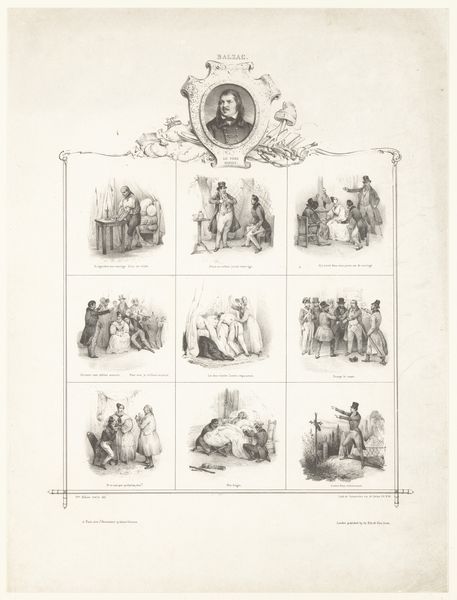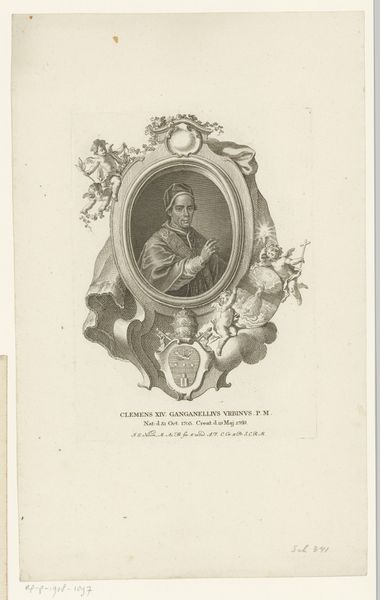
Gedenkpenning op het aanbieden van het Smeekschrift, geuzenpenningen en het zegel van het verbondsbrief van de edelen, 1566 1847 - 1849
0:00
0:00
print, engraving
#
portrait
#
medieval
# print
#
pencil sketch
#
old engraving style
#
11_renaissance
#
history-painting
#
engraving
Dimensions: height 190 mm, width 280 mm
Copyright: Rijks Museum: Open Domain
Curator: Before us is an engraving crafted by Edouard Taurel between 1847 and 1849, currently held at the Rijksmuseum. Its full title is rather descriptive: "Gedenkpenning op het aanbieden van het Smeekschrift, geuzenpenningen en het zegel van het verbondsbrief van de edelen, 1566." Editor: It's quite detailed, almost like a meticulously rendered technical drawing. But despite the cold precision, there’s an intriguing layering of symbolism. The medals themselves have a captivating weight. Curator: Absolutely. The engraving portrays commemorative medals, each carrying layers of meaning tied to the Dutch Revolt. Note how each emblem captures different facets of that pivotal historical moment. The central portrait, encircled by text, honors a key figure, and we see depicted as well the presentation of the petition. It creates a visual lineage of rebellion. Editor: Lineage is a very insightful reading, because the piece clearly communicates status and consequence through symbols. The way these medals would have been seen, touched, exchanged, must have shaped public opinion, instilling perhaps, bravery. Curator: The "geuzenpenningen," or Beggars' Medals, are potent symbols in themselves. Defiant badges of identity appropriated from a term of insult hurled at those who opposed Spanish rule. The medals become tools for solidarity and a public declaration. Each symbol works like a coded language. Editor: Exactly. And even rendered in engraving, the meticulous depiction hints at their inherent power as propaganda. How were they received and disseminated at the time? Who were they trying to reach and what strategies were used to influence their views? Curator: A compelling question. Such engravings were crucial in disseminating knowledge and bolstering the revolt's legitimacy during a pre-mass media age. They circulated images, creating solidarity and reinforcing values. Think of this engraving as an image circulating an image, repeating its significance. Editor: Seeing these medals laid out, captured by Taurel’s hand in the 19th century, emphasizes their cultural staying power. They continue to speak volumes about identity and defiance. What began as individual declarations continues echoing. Curator: It serves as a testament to art's enduring capability to condense complex narratives into poignant symbols. I look at it, and it captures not just history, but also its continuing relevance.
Comments
No comments
Be the first to comment and join the conversation on the ultimate creative platform.
